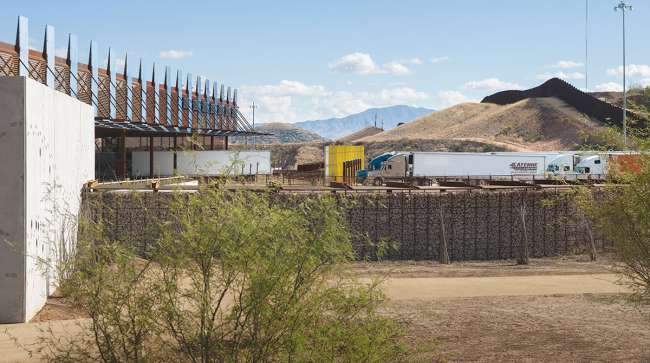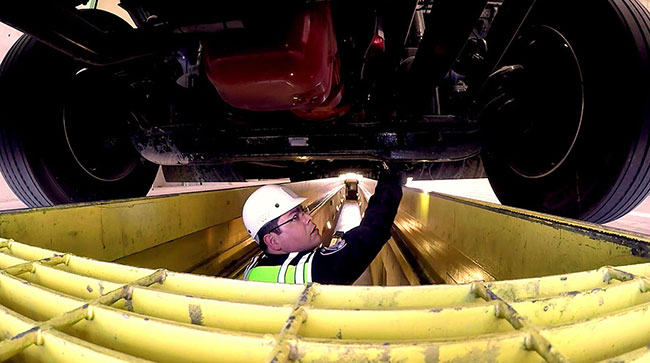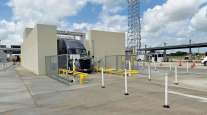Staff Reporter
Arizona DOT Expands Mexican Training Program to Subcontractors

Truckers who operate in the maquiladora business are the newest participants in the Arizona Department of Transportation’s truck safety improvement program.
Through its Border Liaison Unit and the International Border Inspection Qualification program, ADOT officials train Mexican truck drivers on the state’s highway safety requirements, covering topics from tire wear and brakes to securing flatbed loads.
A maquiladora refers to a subcontractor that imports components of a product manufactured in another country duty-free, assembles the product and exports it back to the country in which the components originated. The maquiladora industry is prominent in Sonora, the Mexican state that toes the U.S. border for nearly 500 miles.
ADOT offered its first training session geared toward drivers for maquiladora factories after representatives from the industry approached the agency. ADOT spokesman Tom Herrmann explained that, previously, the agency has primarily designated sessions based on region, covering areas sprawling from Ensenada on the Pacific Coast to Nogales, which is 70 miles south of Tucson and contains Arizona’s busiest border crossing facility.
“It’s a very big industry, and it’s a very important part of the trucks that go back and forth across the border,” Herrmann said. “We’re finding a lot of interest in the program.”
According to a study from University of Arizona professor Vera Pavlakovich-Kochi, who specializes in geography and regional development, the maquiladora industry sustains about 34,000 jobs in Nogales. Electronics, apparel and transportation equipment manufacturing account for more than 50% of employment in Nogales’ maquiladora sector.
Although Nogales remains Mexico’s maquiladora powerhouse, Pavlakovich-Kochi’s report indicates the industry is growing in other Sonora cities, such as Hermosillo and Empalme.
“Increasing demand for on-time delivery, together with more stringent border-crossing procedures after the 9/11/2001 terrorist attack increasing cross-border wait times, also encouraged location and relocation of suppliers closer to maquiladoras,” Pavlakovich-Kochi states in the study.
Through the International Border Inspection Qualification program, five Spanish-speaking ADOT inspectors travel into Mexico and conduct two-day classes that culminate with a test that includes a written component and a practical exam involving a truck.
Since the program’s inception two years ago, ADOT has conducted 20 training sessions. Herrmann said that the agency has 17 more sessions scheduled through the end of February.

A safety inspector looks over a truck at the San Luis Port of Entry in San Luis, Ariz. (Arizona Department of Transportation)
The 469 drivers that have passed through the program have demonstrated a low rate of safety infractions, Herrmann said. For example, those drivers have made a combined 6,495 border crossings, and 13 trucks have been pulled out of service for significant safety violations.
Jaime Olaiz, chairman of the Safe Border Trucking Association, said common infractions pertain to lights, brakes, load securement and tires. The association represents Mexican and U.S. carriers and works with local and federal agencies to ensure industry competitiveness in the region.
“The trucking companies that have participated in the liaison unit’s training have seen the out-of-service rates drop. You could cite that as one of the benefits of participating in the program,” Olaiz said. “There’s, I think, a big appetite from the Mexican carriers to really understand the regulations such that they can do something about it.”
The Bureau of Transportation Statistics reported that more than 31,000 trucks crossed the border from Mexico into Arizona in June. Mexican trucks moving into the United States are confined to border commercial zones, or areas surrounding certain border cities. The Federal Motor Carrier Safety Administration determines these zones using a formula based on population size of the municipality along the border.
“When they approach the border, they know what to expect,” Herrmann said. “The drivers have been trained and clearly they have an incentive to make sure their trucks are safe because it saves them time and money when they cross the border.”
Using the messaging service WhatsApp, drivers who have completed the program can send pictures of their trucks to inspectors, who can make suggestions about repairs. Herrmann said that drivers have used this service 147 times to submit pictures to inspectors. About 70% of the time, inspectors have detected violations that drivers can correct before they reach the border.
“It saves them time, it saves them money [and] it saves them the inconvenience of having the truck stopped for repairs at our port of entry,” Herrmann said. “A driver that crosses the border three or four times a day couldn’t really afford to spend an hour or two waiting for his truck to be repaired. It speeds up the process for them coming across the border.”




